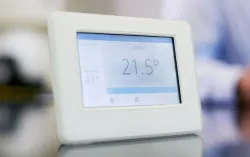
The utility industry is facing a critical point where it must embrace the vast potential of artificial intelligence (AI) to transform...

Utilities are dealing with exponential growth in the volume and complexity of data. At the same time, they are readying for the energy...

The tragic humanitarian and economic crisis resulting from Russia’s invasion of Ukraine will have both long- and short-term impacts on...

The role of data and digitalization in energy and climate transitions is unquestionably growing. As other sectors look to accelerate...

There is a revolution underway in the oil and gas industry. This sector has decades of experience in collecting and analyzing all kinds...

This CGI blog post discusses new pressures on companies to identify and manage climate risks.

While robotic process automation (RPA) can be used to automate many industry processes, how do utilities ensure they automate the right...

